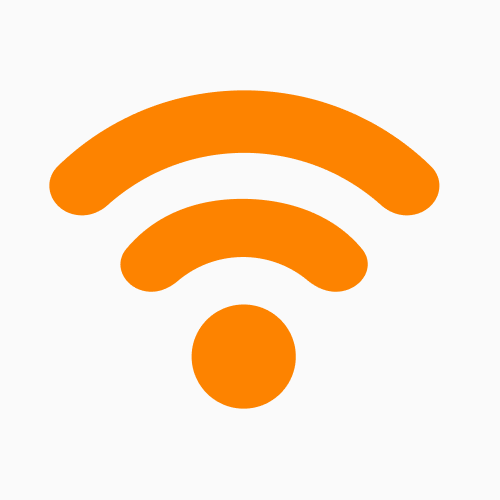What to Do When You Can’t Find Applications Folder on Mac
Our comprehensive guide below will help you quickly find or restore the missing Applications folder on your Mac. No more frustrations!

The “Applications” folder on Mac
The Applications folder is one of the central features of macOS. When everything works correctly, it provides easy access to most apps installed on your Mac.
However, in some rare situations, the Applications folder can disappear from its usual places, which can be a confusing experience for anyone—especially if you’re new to macOS!
In this post, our iMobie team will show you 4 simple ways to locate the Applications folder and how to restore it if it’s gone missing from Finder.
4 Quick Ways to Find the Applications Folder
There are (at least) four quick ways to find the Applications folder on your Mac. It really should be five, but for some inexplicable reason, Siri doesn’t seem capable of opening the Applications folder on Sequoia 15.3.1.
Method 1: Use the Finder Sidebar
Click the Finder icon in your dock to open a new Finder window. In the sidebar, click the shortcut named Applications to display the contents of the folder.

Applications on the sidebar of macOS
If you can’t find the Applications folder listed in the Finder sidebar, it may have been hidden or removed. You can restore it using the instructions listed in the next section below.
Method 2: Use the Go Menu
Open the Finder app using the shortcut in your Dock, or click anywhere on your desktop to switch to the Finder app. Open the Go menu and select Applications.
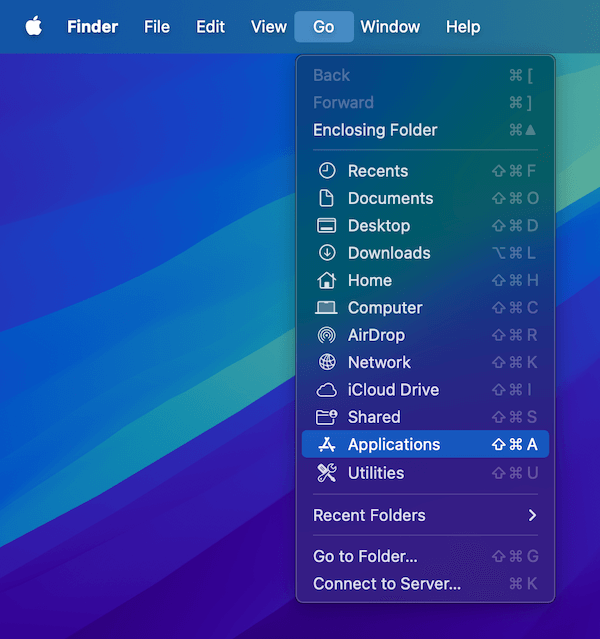
macOS Menu Go Applications
You can also use the keyboard shortcut Command + Shift + A within Finder to open it faster.
Method 3: Use Spotlight Search
Open Spotlight search using the keyboard shortcut Command + Space. Type the folder name Applications into the Spotlight search bar, and the search will begin as you start to type.
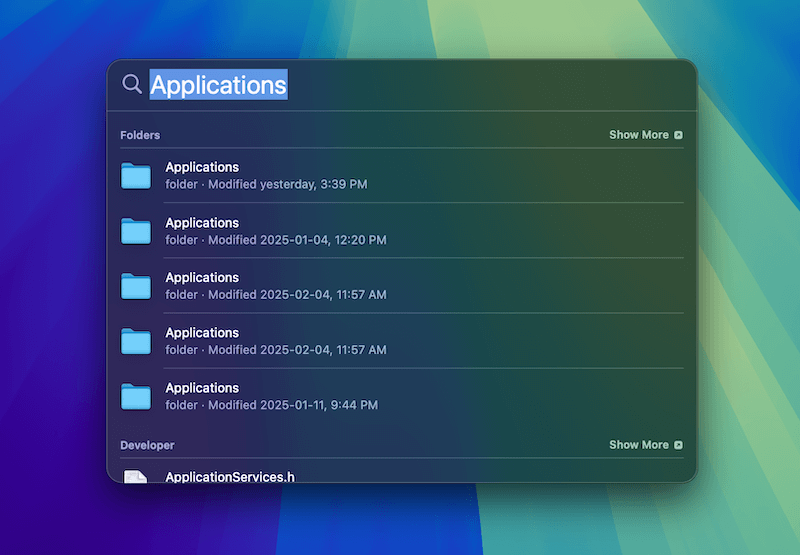
macOS Applications Spotlight search
Scroll through the list of search results to find the Applications folder entry, and click to open it.
If there are multiple entries, you can use a keyboard shortcut to show the full folder path and choose the correct folder. Tap the down arrow key to cycle through the results list, and when you have selected one of your folder results, hold down the Command key.
The main Applications folder is located in Macintosh HD/Applications, but there are several others with the same name in different locations.
Method 4: Use Terminal commands (for Advanced Users)
Open the Terminal app using Spotlight or your favorite method, then type the command open /Applications and press Return.
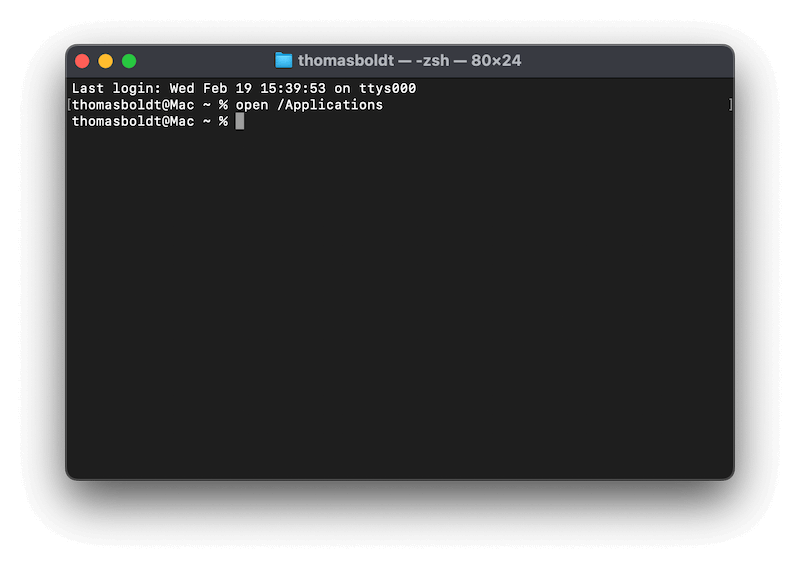
macOS Terminal open Applications
A new Finder window will open to display the Applications folder.
What to Do If the Applications Folder is Missing from Finder Sidebar
The Applications shortcut in the Finder sidebar is the easiest way to locate the Applications folder, but it may not be visible. It is displayed by default in the Favorites section of each Finder window, as shown below.
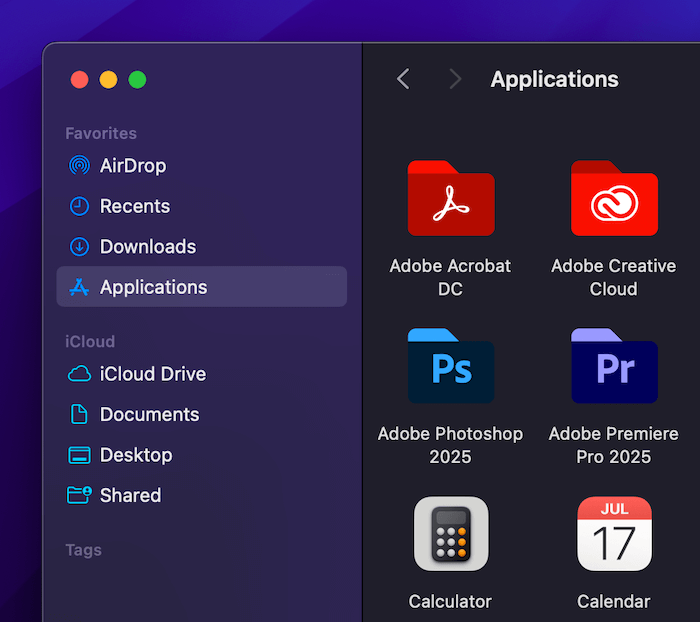
Find Applications on macOS Sidebar
If your Applications folder shortcut is missing from the Finder sidebar, you can restore it in the Finder settings:
Step 1: Open the Finder app menu and select Settings. You can also use the keyboard shortcut Command + , (for clarity, that’s a comma).
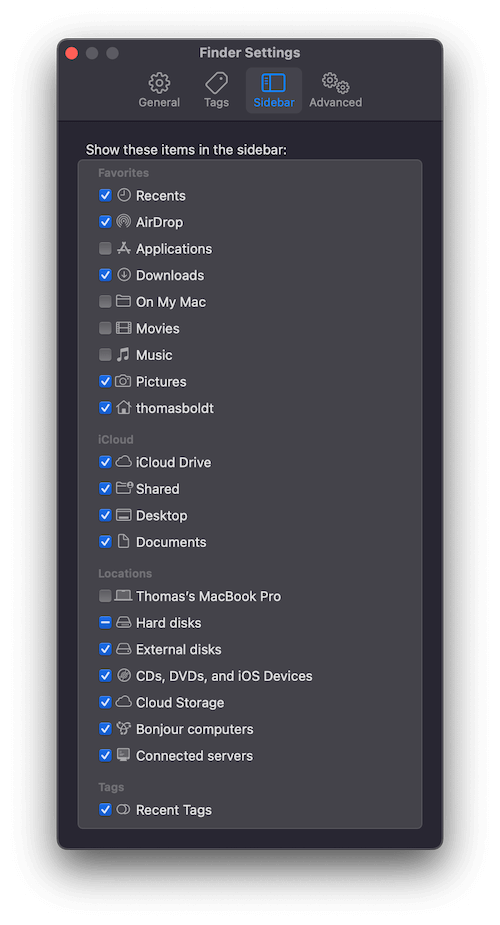
macOS Finder Settings
Step 2: In the Finder Settings window, switch to the Sidebar section. Locate the entry titled Applications near the top of the list, and place a checkmark beside it to restore it to your Finder sidebar.
The Applications folder shortcut should now be visible in the Finder sidebar in all your Finder windows.
What If the Applications Folder is Completely Missing?
By default, the Applications folder cannot be renamed or deleted, which prevents accidental changes. If the Applications folder is completely missing, then something has gone seriously wrong with macOS. Make a backup of your documents and data on an external storage drive as soon as possible, and try the following tips:
Open the Disk Utility app, select your system drive, and click the First Aid button to scan for potential hardware issues.
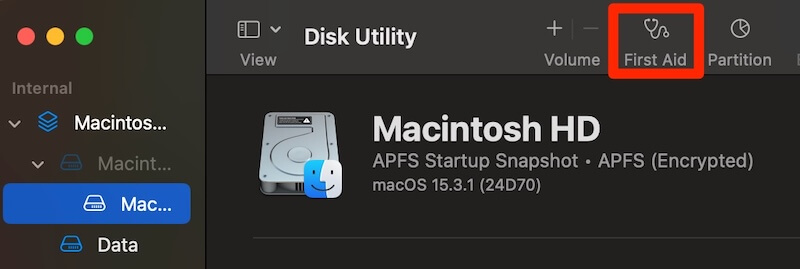
macOS Disk Utility First Aid
If you have a Time Machine backup from a point when you know your Applications folder was still present, you can restore your Mac to a working state.
If that doesn’t work, you may need to reinstall macOS and/or contact Apple support for more information about your specific situation.
How to Find Hidden Applications on Mac
Depending on how you use your Mac, some applications may not appear in the standard Applications folder. On Macs with multiple user accounts, some apps are only installed for a specific user or group. If you use third-party software downloaded from the internet, it may install in an alternate location.
Despite the simple ‘drag and drop the icon into the Applications folder’ method used to install most Mac apps, apps will work from any folder, so it’s even possible to hide apps just by moving them to an unusual location.
All this uncertainty means that Spotlight search is the simplest way to find a hidden app on your Mac. Use the keyboard shortcut Command + Space and start typing the name of the app you’re looking for. Look carefully through the results to locate your missing app.
If you want an overview of all installed apps, you can search for .app in Spotlight. In the results, locate the Applications section and click the small Show More link.
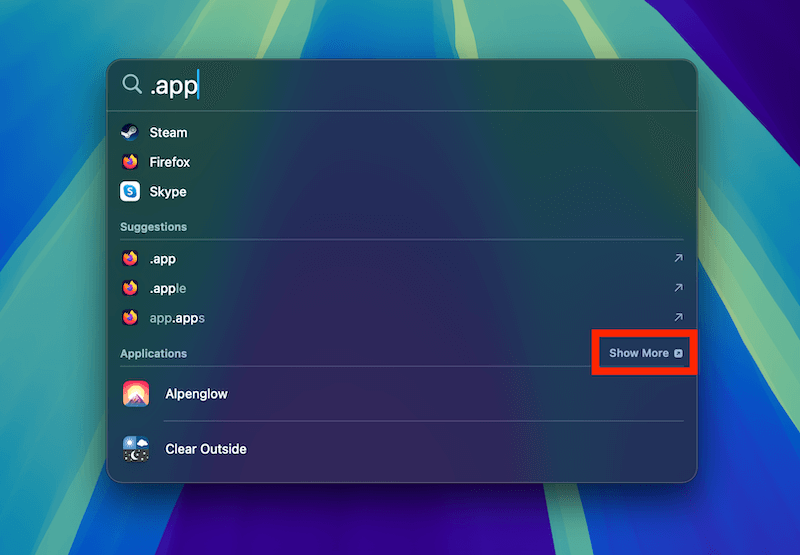
macOS Applications Show More
This will open a new Finder window displaying every app that uses the .app extension.
Tip: Make sure you’re logged into a user account with administrator privileges to locate apps across all user accounts.
While the Spotlight method is the simplest way to find hidden apps, the .app trick may not uncover all your hidden apps. For a more comprehensive overview, CleanMyMac makes it easy to monitor all the applications installed on your Mac, whether hidden or not. It also simplifies the process of uninstalling multiple apps at once, so you can quickly clean out any hidden and unwanted apps to free up disk space.
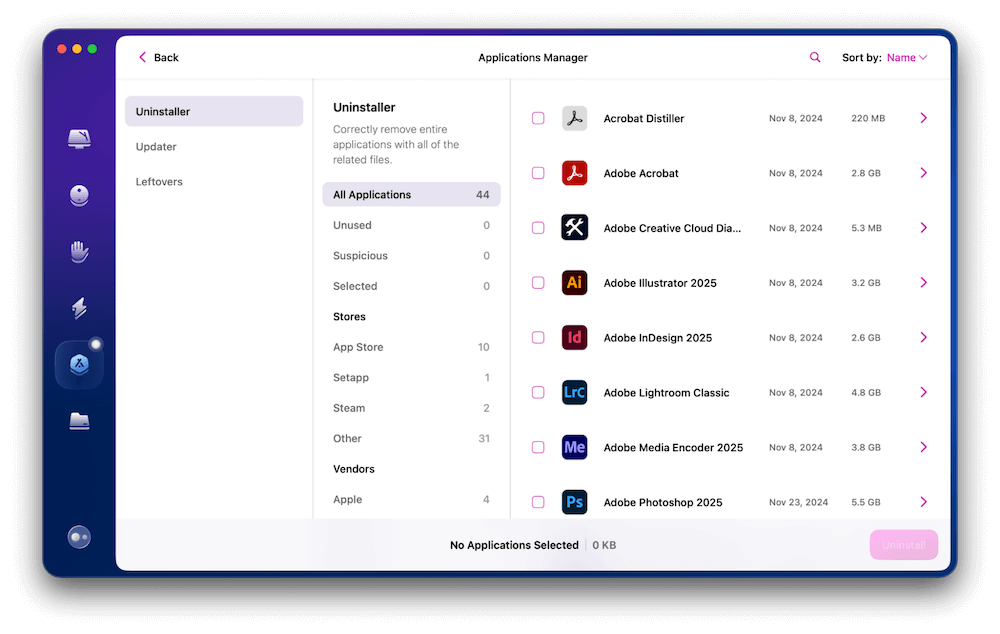
The Applications Manager in CleanMyMac. Read our full CleanMyMac review for more!
Final Tips
One of the best things about the macOS user interface is its extremely simple organizational structure. Just because you can start putting your apps in any old folder doesn’t necessarily mean you should!
It’s usually best to leave apps in their default locations unless you have a specific technical reason for moving them. There’s a good reason the Applications folder has been a consistent part of macOS since before the days of OS X!
Product-related questions? Contact Our Support Team to Get Quick Solution >
